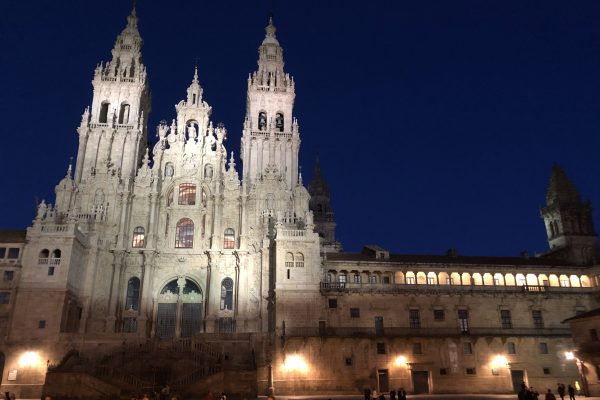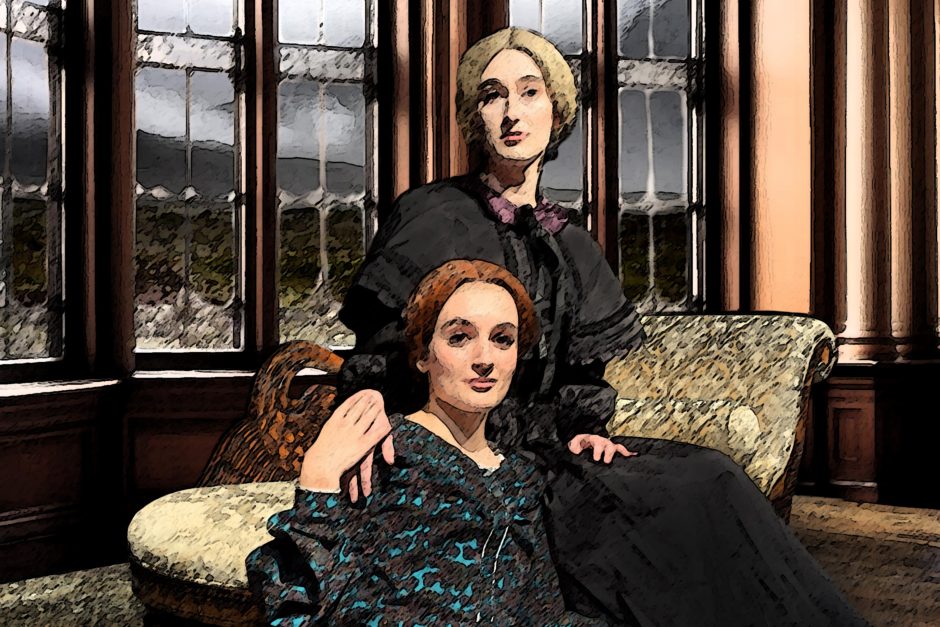CSRI takes Ward ’21 on pilgrimage across Spain
Maeve Ward ’21 wanted to do something exciting with her summer, and her research for the Cornell Summer Research Institute (CSRI) was exactly what she was hoping for.
Her studies led her to explore northern Spain for two weeks with Assistant Professor of Religion Chris Hoklotubbe. They explored portions of a 500-mile pilgrimage called the Camino De Santiago, known in English as The Way of St. James.
“This pilgrimage has meant a lot to a lot of people,” Ward said. “There’s a reason that so many people have gone on it throughout history. People have died to go on this pilgrimage. I think neglecting their story is doing them a huge disservice.”
The researchers walked about 10 miles a day of the pilgrimage that started in the ninth century. They explored cities and cathedrals along the way, eventually making it to the end, Santiago de Compostela, the cathedral where St. James is believed to have been buried along with his disciples.

Their trek along the pilgrimage surprisingly lead Ward’s research away from St. James, the patron saint of Spain, and toward Mary–the mother of Jesus.
“According to legend, when St. James, one of Jesus’ 12 disciples, made it to Spain, he received a revelation from St. Mary who encouraged him to keep preaching,” Hoklotubbe said. “If you didn’t know you were on the route of St. James, you would think you were on the route of Mary because Mary is most predominant in many of the cathedrals. So this became a point of surprise and interest to both me and the research of Maeve and sparked our interest in thinking of the representation of Mary along the pilgrimage.”
Ward, who majors in religion and classical studies at Cornell College, says the trip and her research topic has opened her eyes to new ideas that she had never considered before.
“I’m exploring rationality versus emotionality as portrayed through Mary where she is reading or crying,” Maeve explained. “Traditionally, emotionality has been coded as feminine and weak. In Mary, we see an example of someone who is profoundly emotional and also very commonly depicted in almost every Annunciation scenario as reading a book, a very intellectual pursuit, which would seem to contradict the mental unsoundness of emotions.”
Hoklotubbe says the codex, or the book itself, wasn’t developed until the second or third century, so accurate depictions of Mary should include a scroll.
“But it’s even surprising that Mary is reading, given the high illiteracy rates and expectations for women in general not to read,” Hoklotubbe said. “We became curious about the evolutions and origins of that iconography and curious about what kind of potential that had for either encouraging or providing the seed of imagination that women too can read and be students of scripture.”
Ward will produce a paper for her CSRI research by the end of the 8-week institute that will put her ahead of the game for applying to graduate school over the coming years. She wants to continue studying religion in the medieval or classical era.
“This paper will actually be comparable to graduate-level work and will be useful for showing graduate programs that she is already capable of doing the work that they are doing,” Hoklotubbe said.
The trip also served as a precursor to a course planned for next school year where students will have a chance to explore the pilgrimage in northern Spain for an 18-day block with a Spanish and a religion professor.
Tags: religion



